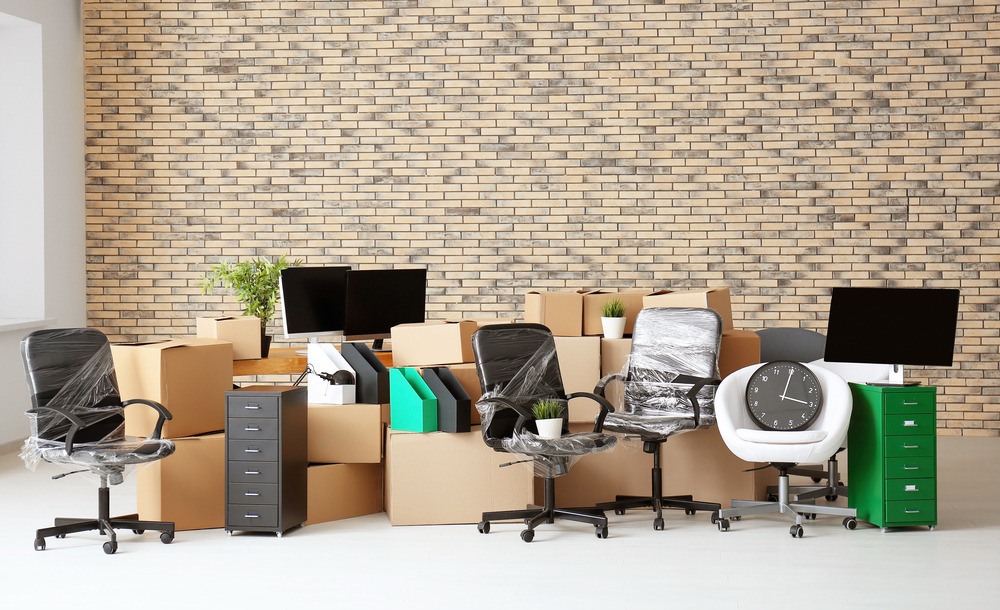How to Wrap Furniture for Moving (And More Packing Furniture Tips)
Planning a move that involves furniture and household items can feel overwhelming. There’s so much to consider, from packing to picking the right moving truck. Even figuring out how to navigate the furniture safely from your home onto the truck and into the new home isn’t easy.
Then there’s the matter of doing it yourself versus calling in professionals, especially when you’re on a tight budget.
But whichever way you choose to go, there are some things you really need to know – how to wrap furniture for moving and pack it safely enough for handling and transport. The following information will help get you ready for your next move.
How to Wrap Furniture for Moving
You can approach packing furniture for a move in several ways. Bubble wrap is a popular choice because it’s cheap, easy to use, and offers great protection to fragile pieces of furniture. It can be used to prevent wooden furniture from getting scratched or chipped when moving it around the house, loading it onto a trailer, and installing it in a new home.
Another cheap alternative is blankets. Sure, you can use specialty packing blankets and covers. Many professional movers do this because they don’t cause friction on the surface of wooden elements. But any blankets you have around the house will suffice.
In addition to bubble wrap and blankets, you could use plastic wrap or shrink wrap. This doesn’t offer substantial protection and should be used before bubble wrap and blankets. However, it serves a specific purpose.
Shrink wrap does an excellent job of keeping dust away from upholstered furniture. Upholstery can gather plenty of dust, especially if your move necessitates furniture storage for a while.
If you want to keep that from happening, it’s best to learn how to wrap furniture for moving with shrink wrap before adding other layers for extra safety.
Bubble wrap for moving furniture is great but does little to minimize dust. In fact, if the furniture isn’t clean and dust-free, the wrap can rub against the surface material and scratch it or cause discoloration due to existing dust particle deposits.
Furniture packing wrap, whether you call it stretch wrap, plastic wrap, or shrink wrap, is a must-have in your moving supply arsenal. And you probably know by now that the more layers you use, the stronger it gets.
This is great for keeping furniture pads locked in place, preventing cabinet doors from swinging open, drawers from sliding, cushions from falling, etc. It’s not the most enjoyable wrap to remove, but it makes the transport process safer. Besides, thanks to plastic wrap rolls being available in multiple sizes, you can easily wrap everything yourself before the movers arrive.
More Packing Furniture Tips
Learning how to wrap furniture for moving will only get you so far. If you’re no stranger to moving, you’re probably aware that properly wrapping is just one part of the process.
Packing furniture for moving requires more preparation work unless you hire some movers to do everything for you. On that note, here are some helpful tips to keep in mind.
Tip No. 1 – Dismantle Large Furniture
Even if you have a large doorway, taking out complete pieces of furniture isn’t efficient when moving. That’s why one of the top packing furniture tips any mover will give you is to dismantle large household items first.
Large cabinets, bed frames, dining tables, and other elements can be very heavy. There’s no reason to complicate things by not taking them apart if they have removable components. It will make it easier to use furniture packing wrap and haul them from your home to the trailer or truck to your new property.
Consult with the owner’s manual to unscrew furniture legs, drawers, hinges, doors, and other elements that add unnecessary weight or can swing open during transport. This makes packing furniture for moving slower but results in safer shipping and extra maneuverability for the cargo’s movers.
Tip No. 2 – Stock Up on Plastic Bags
If you’re going to disassemble something, you better make the assembly process easy on yourself. This means taking inventory of screws, bolts, rails, handles, hinges, decorative pieces, and suchlike.
It’s usually best to put them in marked cardboard boxes to make it easier to find them later on. Alternatively, you can pack them in plastic bags, put a label on them, squeeze the air out, and save even more cargo space.
Tip No. 3 – Go Easy With the Drill
Dismantling furniture isn’t a favorite fan activity when packing furniture for a move. It can take time, but most importantly, it carries some risk.
People don’t want to damage the furniture. Yet a few adjustments to lower the torque on the drill can prevent stripping and leave your furniture and its hardware intact.
Tip No. 4 – Cardboard Boxes Make a Difference
Not every item in your house is as durable as the others. Sometimes, furniture packing wrap won’t keep things clean, safe, and stable inside a truck.
Packing furniture for moving in cardboard boxes is a great idea. Smaller items can receive additional protection from impact, humidity, and spills and will be easier to lift or drag on the trailer floor. This also helps movers arrange your cargo efficiently to maximize trailer space and create proper weight distribution.
Even cardboard cutouts used on edges and corners can make a big difference by providing extra protection. Glass furniture like windows, doors, and clear tables can also benefit from a protective layer of cardboard.
Tip No. 5 – Snap Some Photos
A successful furniture packing process must ensure the following:
- Taking the furniture out is easy
- Loading and unloading the furniture can be done safely
- The furniture is well protected during transport
- You can put everything back the way it was in your new home
- You have evidence to back up an insurance claim
Taking before and after photos is very important. It’s the only way to determine how the movers carried out their duties and how you can reassemble large pieces.

Tip No. 6 – Pack Mirrors Carefully
Do you want to know how to wrap furniture for moving when dealing with very fragile pieces? Cardboard, masking tape, and bubble wrap are essential supplies.
For example, mirrors can be framed or stored in thick cardboard boxes. Placing masking tape in an X shape on the mirror can prevent it from shattering even if something bumps it along the way.
Bubble wrap can provide a decent cushion against impact and pressure during loading, transport, and unloading procedures.
You can go one step further and cover each side of a mirror with Styrofoam.
And if you pack mirrors in boxes or crates, make sure you arrange them vertically. Horizontally stored mirrors are more susceptible to shattering from road vibrations, not to mention they may take up unnecessary cargo space.
Tip No. 7 – Use Original Boxes and Packing Material When Available
Storing old boxes and packing materials isn’t an option for everyone. That stuff takes up plenty of storage space. But if you have some lying around, be sure to put them to good use.
Some original packing supplies could be much better than what you buy from the local general store. In addition, they’re already designed for optimum clearance between your belongings and to minimize the amount of space occupied in the back of a moving truck.
Tip No. 8 – Coordinate With Your Movers
When you need to move furniture and ask for quotes, movers will ask for details. They need to get a sense of the weight and size of your cargo. This tells them what type of truck or trailer is required, how many people they need, etc.
But don’t be afraid to ask for some information about the truck’s specifics. If you know the truck or trailer’s dimensions, you can do an even better job of packing your furniture.
For example, you can arrange the furniture in a specific way so that movers load the pieces in the correct order to maximize space. Additionally, weight distribution is key for transporting furniture safely and minimizing road vibrations.
Thus, it’s essential to figure out what items the movers might need to load first instead of last. This type of information indicates what wrapping and packing material to use, items to disassemble, etc.
Tip No. 9 – Start Packing Early
Preparing even a few pieces of furniture can take considerable time. You’ll want to avoid packing furniture for a move on the same day you schedule movers for the pickup.
Start a day early or even sooner, depending on how many pieces of furniture you want to ship. This should give you more time to deal with disassembling complex items, gather enough supplies, double-check the protection, and even arrange the furniture conveniently for the movers to pick it up and load it into the truck.
At the very least, it will allow you to move other household items out of the way, plan the exit route, roll up carpets, and so on.
Tip No. 10 – Clean the Furniture
Packing dirty or dusty furniture for a move is one of the biggest mistakes you can make. Dust particles are highly abrasive, especially against smooth, sleek, and shiny surfaces. Enough pressure and friction can cause severe damage to wooden furniture and even scratch glass.
These aren’t uncommon problems either due to how tightly people wrap their furniture to prevent damage.
Therefore, you must always clean the furniture before packing it. You don’t have to call in a professional cleaning service or do anything too complicated. But a thorough dusting is recommended.
Ideally, you’ll want to clear furniture items of dust right before wrapping them in shrink wrap. This won’t give new dust particles much time to settle, and the furniture will be preserved dust-free for longer.
Tip No. 11 – Hire Professionals at Packing Furniture for Moving
You may know all the packing furniture tips and tricks in the book. But what if you don’t have the time, supplies, equipment, or strength to pack it yourself? Does that mean you have to spend a month prepping before you call a moving service?
Not exactly. Some furniture moving companies offer full-service packages. This includes everything from disassembling to packing to transporting to reassembling and installing the furniture at your new address.
There’s no shame in hiring professional movers to handle everything. They know how to wrap furniture for moving quickly and efficiently, how to pack everything, and plan the best loading strategy to maximize space.
Pro movers use high-quality wrapping materials and stronger cardboard boxes and have easy access to robust furniture shipping crates.
Although you might pay a bit more for the extra work, you gain more peace of mind and free up time for yourself. Moreover, this type of service implies an in-person inspection and quote. Therefore, you’ll get a more accurate estimate, and the movers will figure out exactly what they’re dealing with.
This can prevent on-site coordination issues, communication problems, and the absence of crucial moving equipment.
Moving With Furniture Doesn’t Have to Be Hard
Moving can be a pleasant experience if you take it slow, learn to optimize, and plan everything out. Usually, there’s enough time to do everything right, even if you’re in a rush, as long as you implement some proper packing furniture tips, know how to wrap furniture for moving correctly, and get some assistance.
A moving service might be cheaper than you think. Perhaps even more so after considering the amount of time you save and the higher quality of wrapping and packing supplies. Whether moving across town or three states over, reaching out to professional movers is an excellent choice. Finding a personalized service that fits your project and budget won’t take long.
When you’re ready to get a quote or if you simply need more information, feel free to reach out to Movers Hawaii. Our specialties cover residential, commercial, and military family moves between the beautiful Hawaiian Islands. Pick experienced movers, and you’ll feel right at home in no time, no matter where you move.







